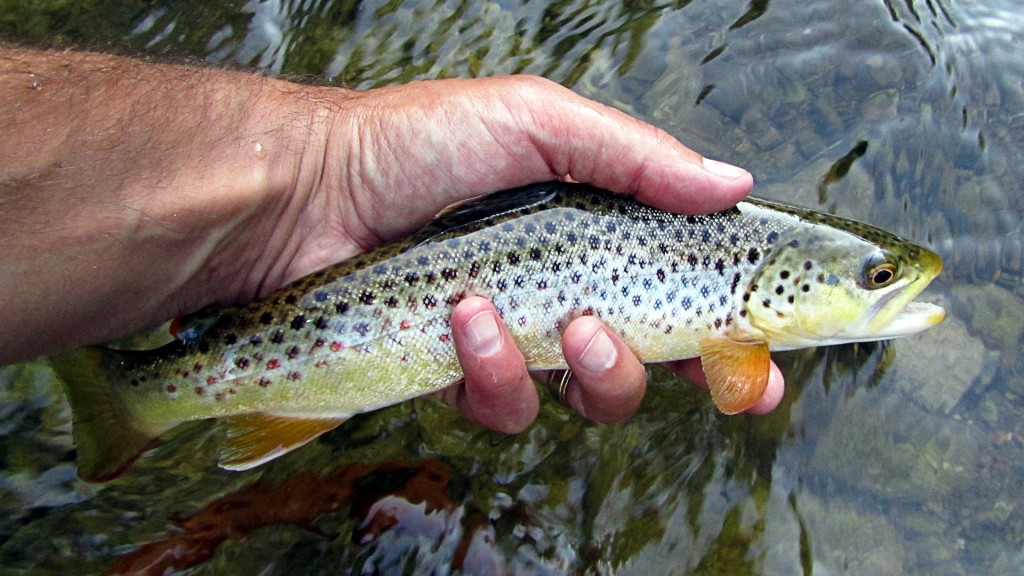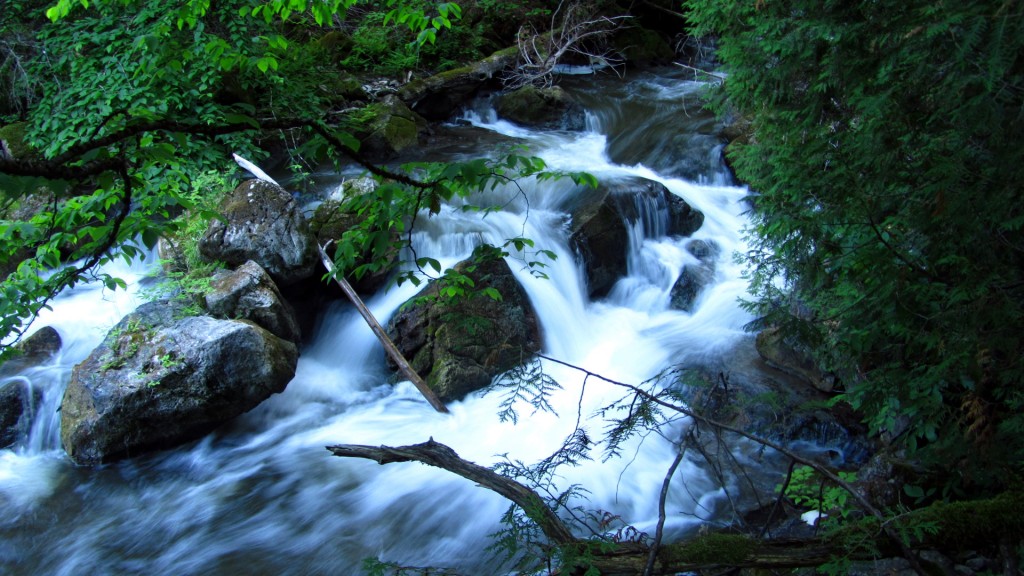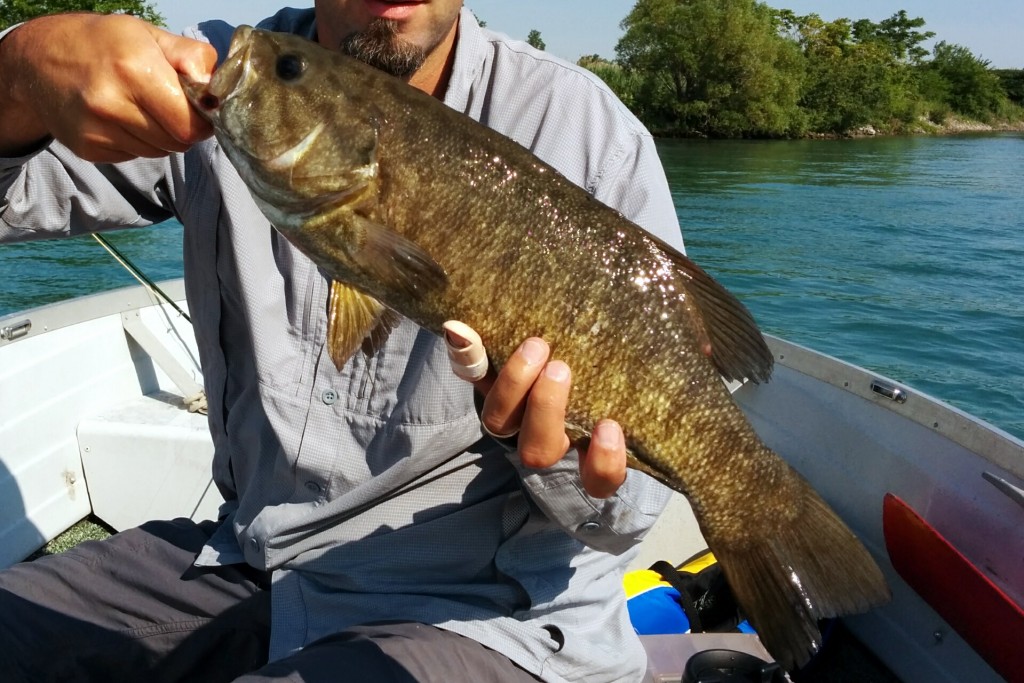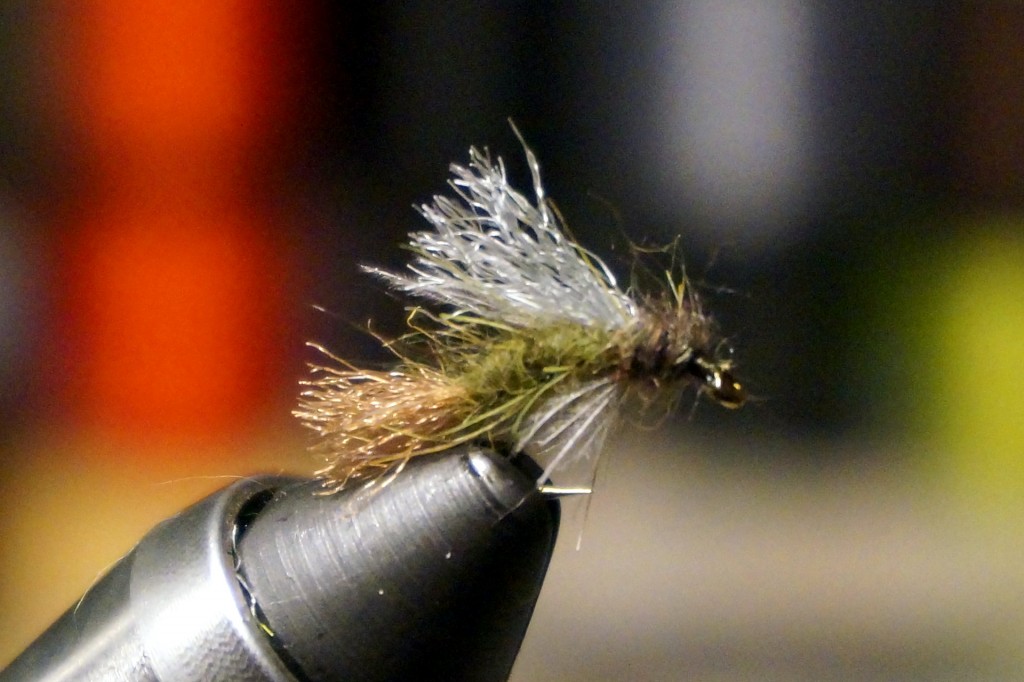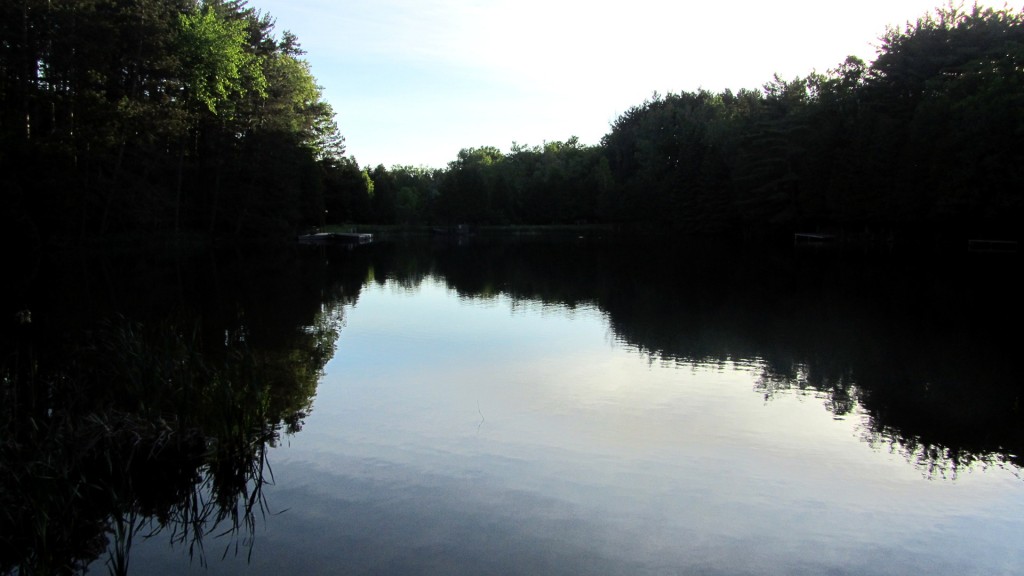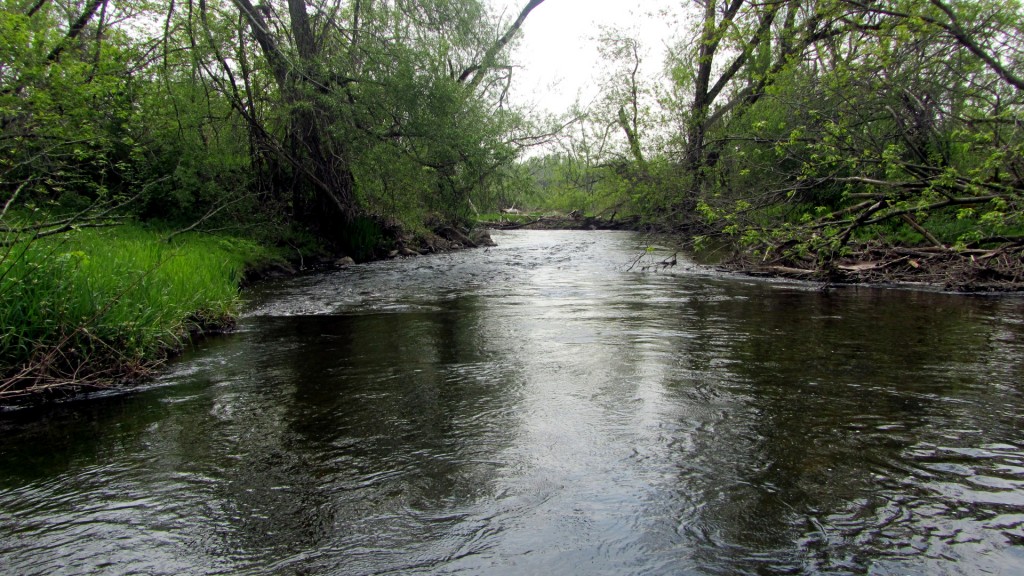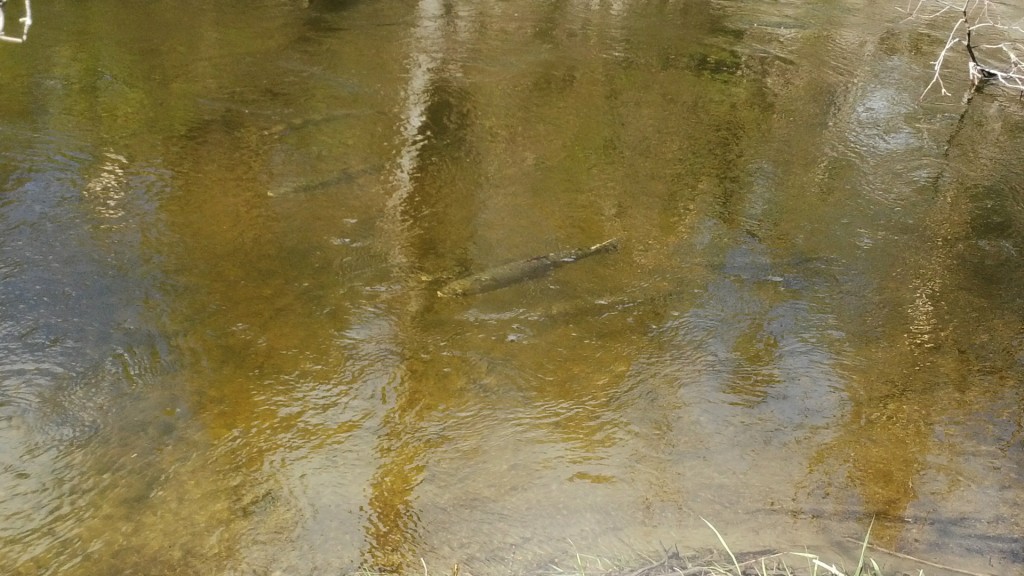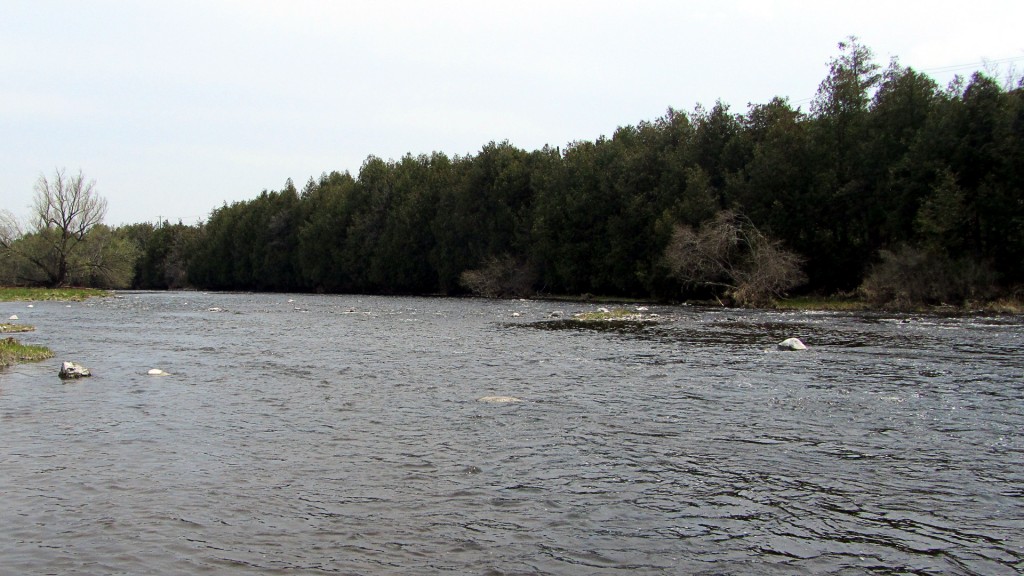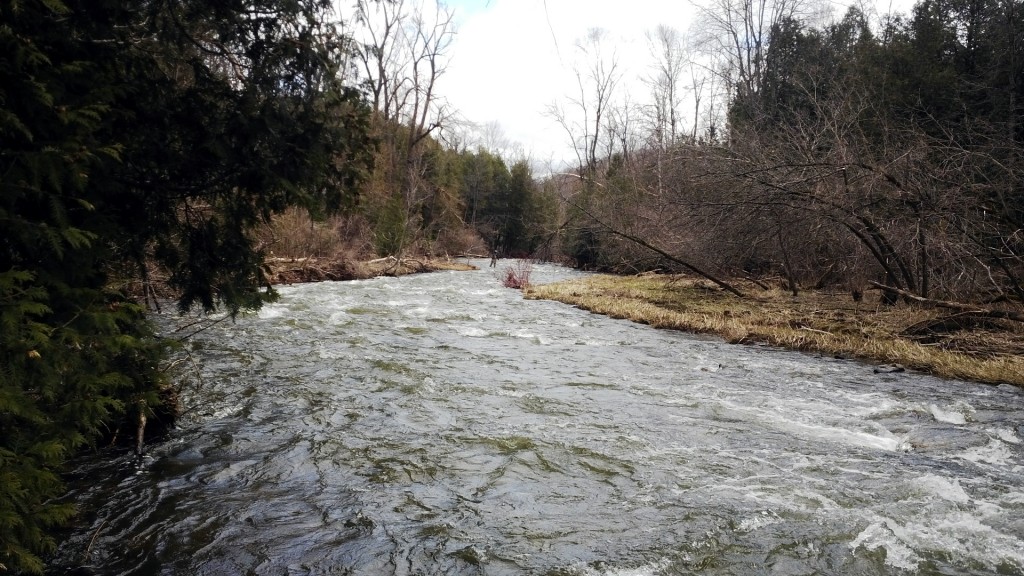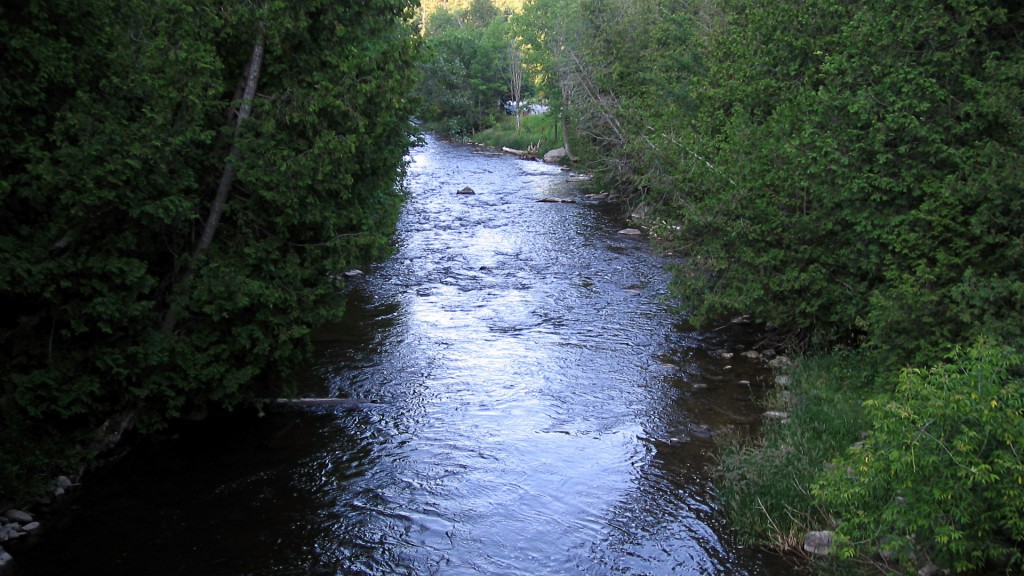In continuation of my last post about exploring new waters, I ventured out to yet another new section of an old river last week. This is another spot I’ve driven past many times, but never realized was accessible due to mostly private property and lack of parking. However, a long chat with a friendly fellow on the side of the river a while back tipped me off, so I decided to give it a try.
On my first visit, unknowing of what the river would hold, I decided to fish upstream. It was a warm, calm day and the river was fairly wide and shallow here, with some nice riffles and runs and lots of small boulders for fish to hold behind. Overall, the combination of easy wading and fairly easy casting and drifts was a welcome change. The main challenge here was presenting a fly upstream in the clear shallow water, where the fish were spooked extremely easily.
I hooked into two browns almost immediately, the first which I lost after it unexpectedly ran at me and I failed to keep enough tension on the line. The second was gently sipping bugs off the surface under a fallen tree before my yellow stimulator fooled it.

